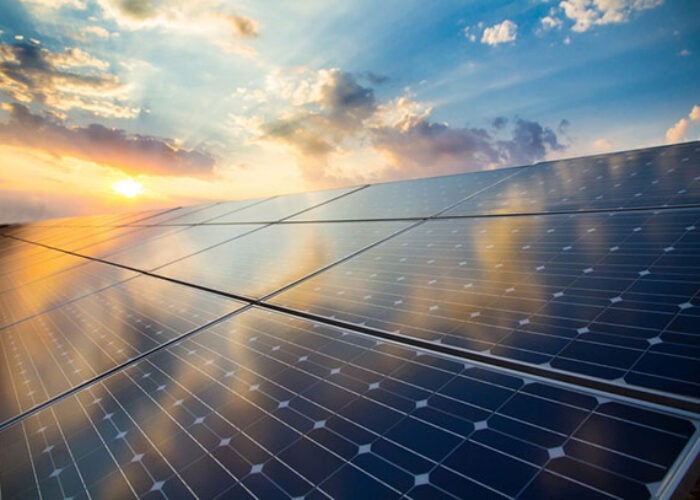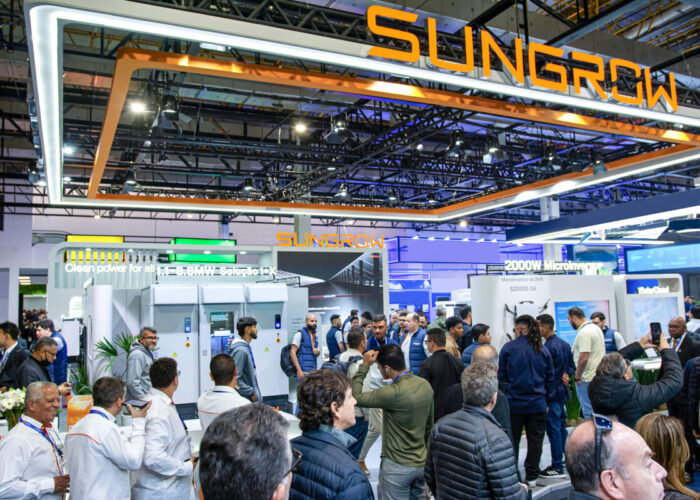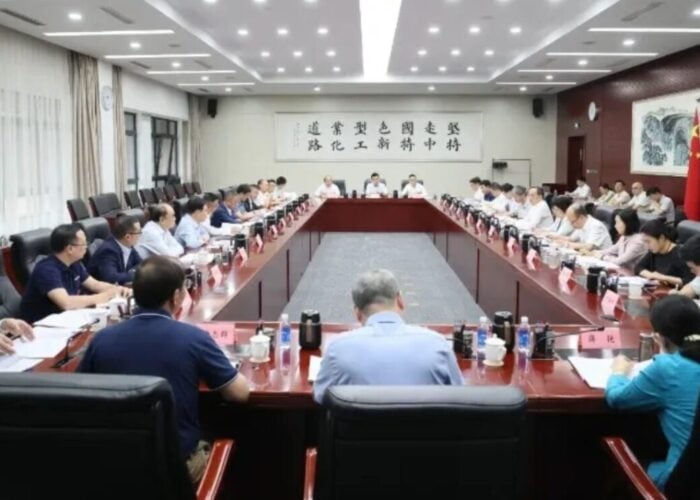Much has been written and voiced over the past couple of months in the PV industry, following the so-called China-531 policy announcement that finally provided a wake-up call to Chinese manufacturers that their domestic end-market was not going to be allowed to maintain its near-exponential growth characteristics.
The focus from many was simply to look at the changes in demand figures from China for 2H’18 and 2019, and the net effect on global demand. A few have speculated at the inevitable fall-out in terms of China-centric producers/suppliers at the cell/module level, not to mention to rush to hit the export-button in light of declining domestic order books.
Unlock unlimited access for 12 whole months of distinctive global analysis
Photovoltaics International is now included.
- Regular insight and analysis of the industry’s biggest developments
- In-depth interviews with the industry’s leading figures
- Unlimited digital access to the PV Tech Power journal catalogue
- Unlimited digital access to the Photovoltaics International journal catalogue
- Access to more than 1,000 technical papers
- Discounts on Solar Media’s portfolio of events, in-person and virtual
These changes are somewhat obvious however. Equally so – but perhaps with bit more naïve – are the instant conclusions that module ASP price erosion will cause some kind of knee-jerk elasticity, enabling unviable end-markets today to burst into action. If only life was that simple!
Over the past couple of months, our in-house market research team at PV-Tech has re-adjusted our forecasts for the PV manufacturing segment, post China-531, timed to overlap with the release this week of our latest PV Manufacturing & Equipment Quarterly report release.
The impact of China-531 turns out to be far more reaching than the quick back-of-the-envelope issues raised above, and potentially has the catalyst to provide some of the most dramatic technology changes in the industry, feeding through to stronger-than-expected declines in polysilicon consumption that are particularly relevant today given the massive polysilicon plant expansions ongoing by the likes of Tongwei and GCL-Poly.
All data and graphics shown below are sourced directly from the new report release, with the feed coming from updated analysis on more than 100 of the leading PV manufacturers across the value-chain from poly-to-modules, accounting for 90-95% of the industry’s entire production quota today.
Module supply softness: the nail-in-the-coffin for multi
For the past couple of years, we have been explaining exactly what is dictating the mono/multi balance in the PV industry. It is worth a quick read up on the May 2017 article I wrote on PV-Tech: Mono and multi production 50:50 in 2018, but mono is the future.
In this piece, I laid out the factors that would ultimately dictate the rate of market-share gains from mono, with two main caveats, copy and pasted from the May 2017 article as follows:
a) If the industry contracts, or even remains static, it will only increase the rate of mono market-share gains over multi, as mono is tight in supply and has the scope to be competitive with multi now. In this scenario, multi is wiped out faster than expected.
b) Conversely, if the market over-performs, and ends up over 85GW [for 2017] (don’t discount for one second), then multi has a lifeline due to the supply constraints of mono. And potentially more time to get its act together for low cost wafering and cell efficiency improvements.
We picked up on the mono/multi activity just after China-531, in an article here. See the section in this article titled: “Mono adoption almost certain to be fast-tracked now with muted objections.”
However, now that we have done our analysis for the new report release, it seems the transition to mono is much faster than we had forecast even a few months ago. I will explain this more now.
Even without any dramatic change in the PV technology roadmaps of the leading cell makers, mono was set to dominate the industry in 2019, and multi would be phased out slowly over the following 3-5 years. But when we now look at the changes that have been undertaken by the leading cell makers (and module suppliers), the acceleration to mono (and accompanying elimination of multi) is much more pronounced.
This can be seen clearly in the new 5-year technology forecasting we have now done. It should be noted that our forecasts on technology are the only ones being done in the industry that look entirely bottom-up across the 100+ major companies supplying approximately 95% in 2019. Other companies doing forecasts only look top-down, and do not consider the impact on the overall market expanding or contracting.
The graphic below is fundamental to the entire forecasting in our report, and covers not just to the end of 2022, but is producer specific by quarter out to the end of 2020. The two graphics shown here refer to our forecast 3 months ago (left) and the one done in the past few weeks for the new report (right).
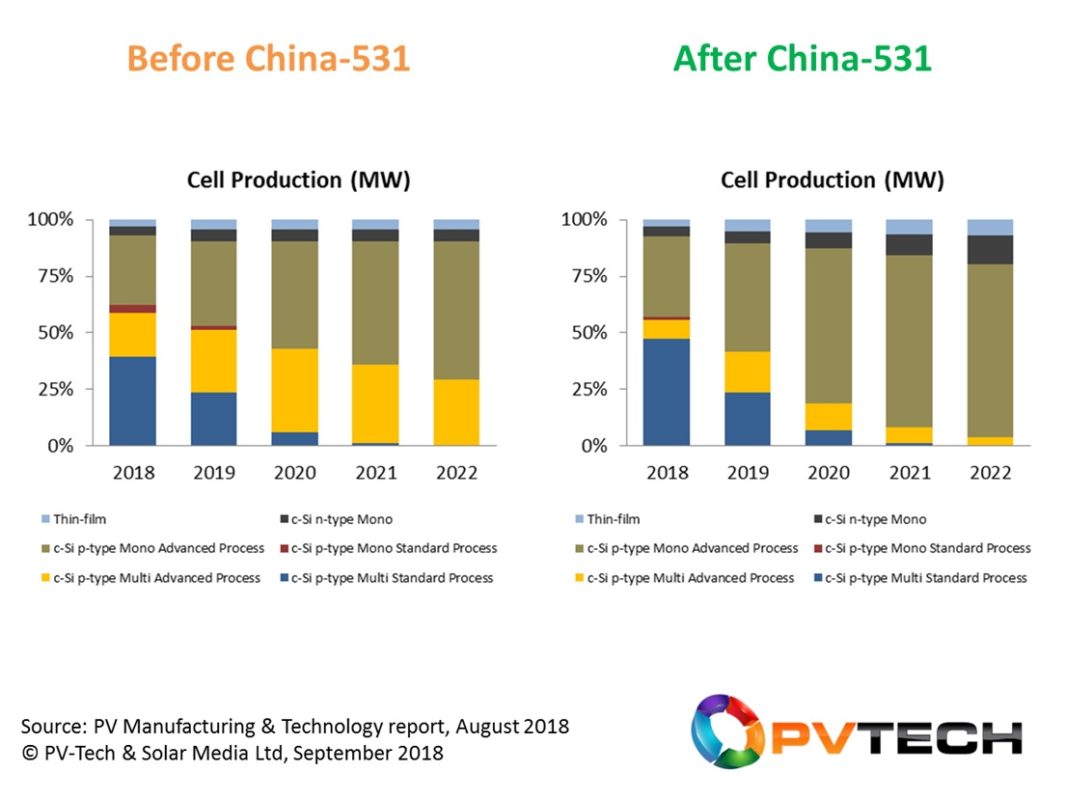
The above forecast may seem rather bold to many in the industry, especially those that are still clinging to p-multi PERC (half-cut of whatever) being competitive with mono going forward. Indeed, for EPCs and developers looking at their multi-GW of 72-cell p-multi module sites of the past few years, it might be hard to imagine things would change so quickly.
But this appears to be happening
So, how come the technology that was dominant just last year, in 2017, is being forecast to be removed from the industry in just 3 years? In fact, not just dominant in 2017, but p-type multi has been at 70-80% of the solar industry shipments during its entire growth phase from GW-per-annum to 100-GW last year.
The answer here come from p-mono being superior in every aspect to p-multi. Anything that can be done with a multi wafer can be done better with a mono wafer. Efficiency improvements have wider process windows with mono, and the resulting efficiency enhancements are greater on mono than multi.
The only thing that made multi the market standard was low-cost ingot casting (as opposed to high-purity mono ingot pulling). Multi casting became a 50-GW-plus commodity business in China (spearheaded by GCL-Poly). The barrier to entry was low: polysilicon purity requirements were low. China as a result grew to its current level of supplying 90% of all wafers to the PV industry.
Mono pullers entered the PV industry adapted from semiconductor. No firm worked out a recipe to scale production to the GW-level, far less work out a low-cost structure. Then LONGi entered the scene and everything changed. Regardless of what happens with LONGi as a company over the next decade, it will always be remembered as the catalyst that ushered in mono during the 100-200 GW annual demand phase of the industry.
Others in China followed LONGi’s low-cost multi-GW fab approach in the past few years, and many others are now diving into this space – something essential for mono to fully eradicate the use of multi in the industry. Expect this to be a massive deal from a technology standpoint in 2019, in the mainstream press.
But, mono wafer supply is just one part. The shift to mono always needed the cell side to drive it also. While the industry was happy to ship 72-cell multi panels to utility sites (the PV world outside China mostly until now), and pure-play makers such as those in Taiwan were mostly incapable of making any technology change, the factors supporting LONGi’s mono claim (‘mono is the future’) were faltering somewhat.
Enter PERC a couple of years ago, and the cell-side prompt came into being.
SMSL technology-flip possibly the final piece of the mono jigsaw needed
As such, during 2017 and the start of 2018, the Silicon Module Super League (SMSL) companies started one-by-one to change their mono/multi mix, and the cell technologies being used (both in-house made, and third-party supplied).
The first to embrace mono was JA Solar, followed by JinkoSolar, and now Trina Solar. LONGi is already fully-mono at the cell/module side, GCL-Poly is painstakingly moving off its parent legacy-multi advocacy, and Canadian Solar is almost certainly start being vocal about mono-PERC during the next few months. Hanwha Q-CELLS now has strong capacity levels of p-mono PERC, and is fully capable of flipping multi lines to mono, or taking excess multi capacity (likely in China) permanently offline if needed.
Now look at the graphic below, if you are still in doubt about the rapid mono transition.
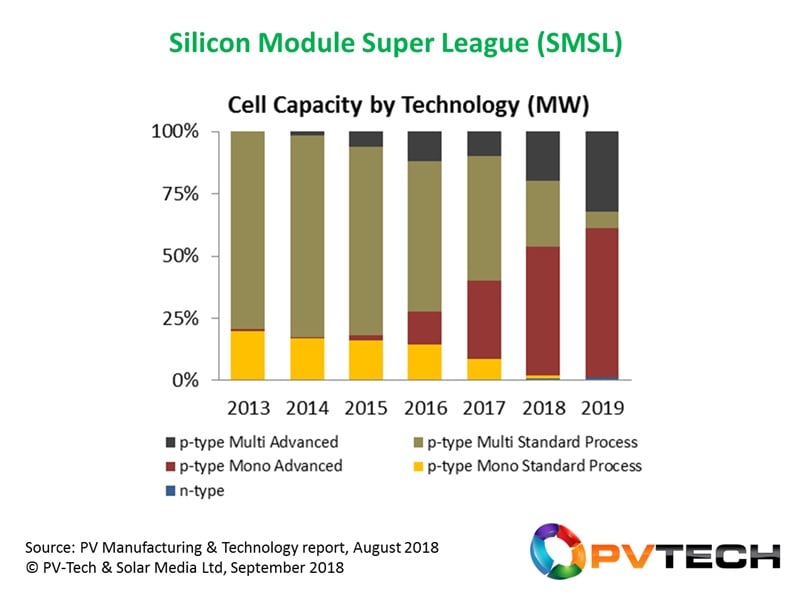
Therefore, if the industry (as a whole) softens in term of annual demand, then the percentage of modules supplied by the SMSL only increases. This is further true since the contraction in demand is basically a China-affair in the near-term, and the Chinese cell/module makers that have no meaningful overseas business are forced to cease production. This portion of the industry has been multi-heavy in recent years, and with minimal-if-any R&D/technology focus.
Pure-play cell making returns – but now mono-based
The next piece of the mono-jigsaw can be seen in another recent development in the industry – this time purely at the cell manufacturing stage.
When PV was growing from a few GW’s per annum to tens of GW’s, there was a home for pure-play cell makers, either in Taiwan or China. Then, pure-play was all p-type multi. Some of the companies now recording multi-GW module shipments started life as a pure-play multi cell producer (Q-CELLS, JA Solar). Few survived, and the past 3-4 years in Taiwan has been rather painful to watch, while the companies there finally converged on a business models that were based on module supply, not cell shipments.
Pure-play cell making has at best been a zero-sum-game. Loss making has been prevalent, and cell makers are either being squeezed by wafer suppliers or module customers. In the past few years, pure-play cell operations has been firmly a loss-making exercise.
Enter China pure-play 2.0 and the development of Tongwei and Aiko Solar. Somewhat resurrected out of the ashes of legacy Chinese manufacturing that was serving the European market in days gone by, these companies have now become the new face of pure-play cell activity in the 100-GW-plus solar industry.
There are two key differences with the pure-play cell approach now of Tongwei and Aiko. First, the scale of economy, with 10-GW level cell capacities across each company emerging in 2019. However, perhaps the more relevant issue comes down to technology: p-mono PERC. In this respect, it is another massive marker supporting the above mono/multi switch in the industry.
In contrast also to pure-play cell activities in the past (in particular from Taiwan), the two Chinese companies are fully integrated into the Chinese c-Si manufacturing system, making them integral to the overall wafer/cell/module strategies of upstream and downstream partners. In this respect, plans for mono ingot capacity levels, and mono module assembly capacities inside/outside China, are made rather at arms-length with the supply channels of p-mono PERC cells coming from Tongwei and Aiko.
This changes the pure-play model from before, and it allows companies such as Canadian Solar or other SMSL players to control in-house and third-party mono cell supply, without having to rely upon ramping up excessive cell capacity that may have underutilization patterns on seasonality or module supply cycles of the industry. And of course, it removes the capex hit for these module suppliers at a time when module ASPs are declining faster than cost reduction measures.
The mono cell capacity levels of Tongwei and Aiko also become important to mono ingot/wafer supply levels (not to mention new high purity polysilicon additions in China during 2018-2020 from the likes of GCL-Poly and Tongwei’s subsidiary polysilicon activities).
The graphic below show our forecast of mono-PERC capacity from these two companies. Plotted here are the effective annual capacity levels, not the nameplate capacities that have ramp-up and phased line deliveries across the calendar years in question.
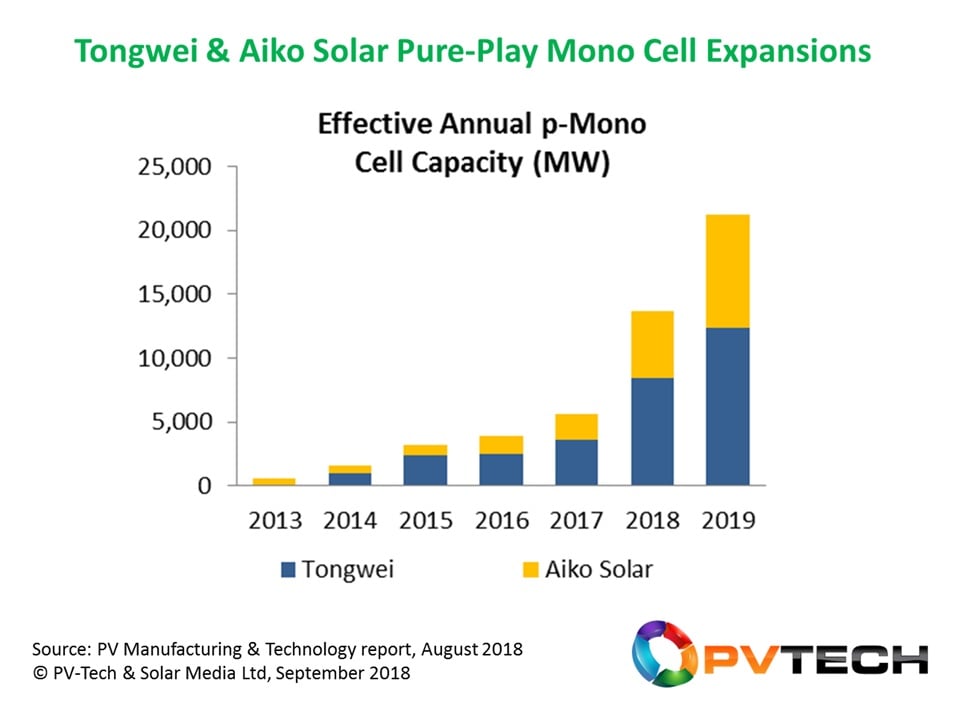
Polysilicon consumption to see further g/W reductions
The China-531 effect is not good news for polysilicon producers. Even before the China-531 announcement, polysilicon supply/demand had been set for imbalance and shakeout, owing to the massive plant expansions underway by GCL-Poly and Tongwei in particular.
Regardless of any change in technology (more mono, more n-type, more of anything higher-efficiency) any downward adjustment of PV demand owing from reduced installations in China from 2H’18 onwards, simply compounds what was shaping up as a bleak time for polysilicon makers.
We have discussed in the past couple of years just how much polysilicon g/W levels were being eroded, driven by increasing mono market share, higher efficiency cells coming from PERC, and the rapid transition from mono and then multi from diamond wire saws for wafering.
The last blog I wrote on this in February 2018 – Polysilicon consumption to decline below 4g/W in Q3 2018 – revealed the move towards blended polysilicon consumption falling below 4g/W during 2H’18.
During the recent updates to the PV Manufacturing & Technology Quarterly report, we have updated our polysilicon model, looking out to 2022, factoring in the changes in mono market-share, one of the key parts of the decline to 4g/W and below during 2018.
We are now in a position to forecast polysilicon consumption continuing its rapid decline. During 2022, the figure will decline below 3g/W by year-end, with an average during the year close to 3.0g/W.
Furthermore, these declines are only conservative and cautious in nature, and there are more upsides and downsides the rate of decline, if we assume a larger-than-expected wafer thickness forecast, or more n-type, or more adoption of multi-wires to replace busbars.
The graphic below shows two slide to illustrate our forecast for polysilicon.
The graphic to the left above shows the rapid decline in polysilicon consumption, revealing 50% silicon consumption in 2022, compared to ten years earlier. However, the graphic on the right is by far the more interesting. This shows the annual decline contributions to the g/W decline.
The main contributions so far have come from cell efficiency increases and kerf loss reductions (including diamond wire saw adoption across mono and multi). From 2020 to 2022, the main contribution is coming from mono displacing multi.
If we focus on 2018 onwards, the simple calculation is to say that there will be a 25% reduction from 4g/W to 3g/W in 2022. For example, a supply level of 100 GW (thin-film and c-Si panels) needs approximately 420k MT of polysilicon, growing to 480k MT in 2022 (assuming c-Si panel supply of 160 GW).
The swing factor of course is forecasting PV demand in 2022, not to mention 2H’18! However, running with these numbers as a starting point, this serves to show the diminishing need for increased polysilicon relative to market growth.
Right now, we have a situation with polysilicon utilization vastly reduced compared to 1H’18 operations (especially in China), yet we have about 200k MT of real expansions ongoing where the companies are looking to ramp to operations between now and 2020/2021.
Is there logic here, or am I missing something?
The current thinking in China appears to be no different to before. Add capacity, and others will be forced out of business, shuttering sites permanently. This is accompanied by the expectation that lower purity polysilicon plants will not be able to upgrade to mono wafer requirements (as has been shown during the past few years where China needed OCI and Wacker for high purity material).
It is by all accounts a risky proposition to assume the demise of others, but there will be many changes to polysilicon plant build-outs in the next few years, and expansion phases can quickly be brushed under the carpet if need be.
Access the full data set from PV-Tech Research
The speed of change in technology today is considerable, and working out how this impacts producers across the entire poly/ingot/wafer/cell/module phases can be extremely challenging. Looking at the top-down forecasts offer a reference point, but the analysis has to be bottom up and biased to the companies with leading and growing market-share contributions as the real drivers.
To access the latest release of the PV Manufacturing & Technology Quarterly report (from which all the data/graphics above are taken), including the bottom up forecasts across the leading 100+ producers in the PV industry today and going forward, please follow the contact links here.

